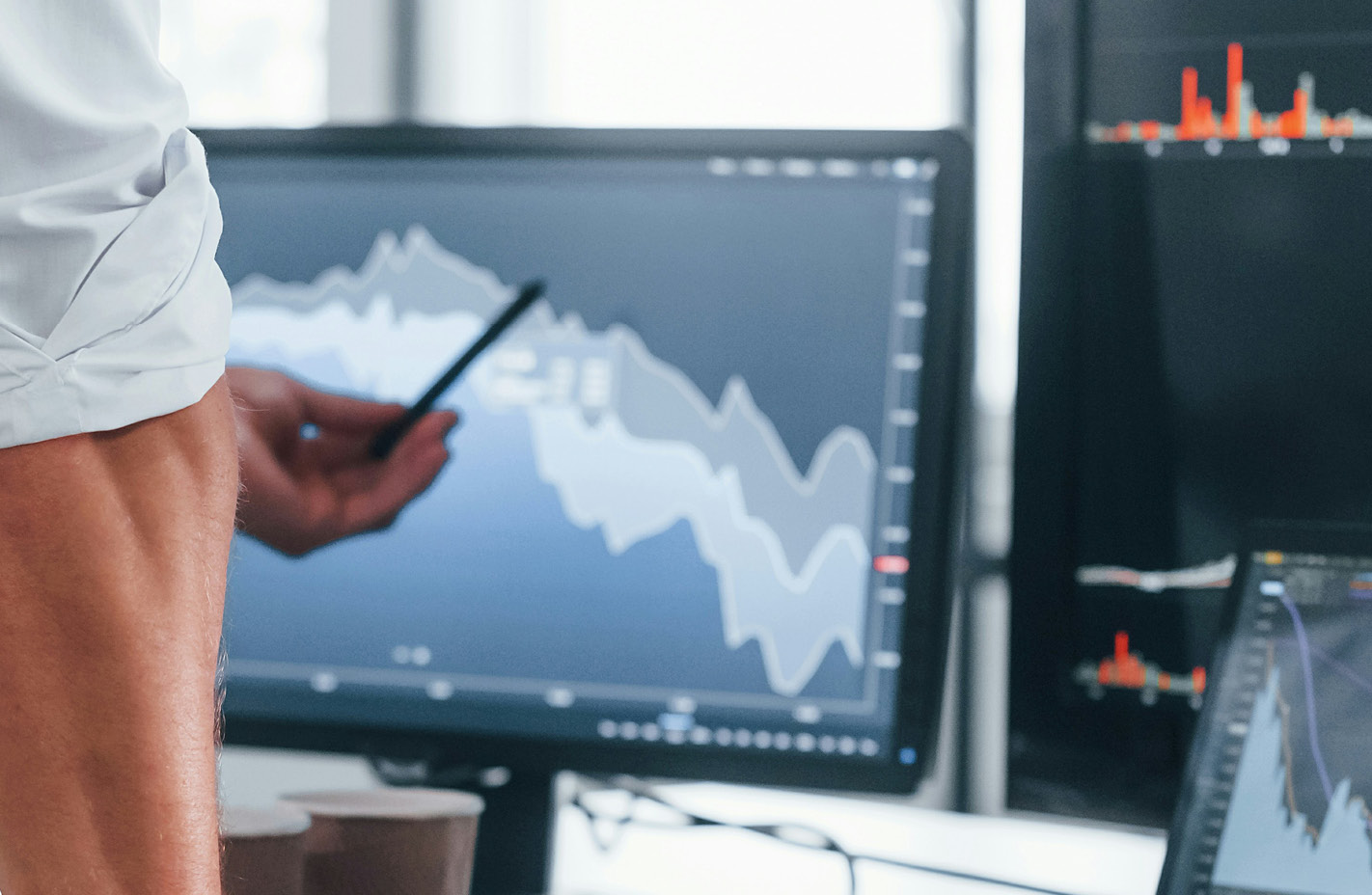Could the Fed hike to 5%?
The article is more than 3 months old. Please note that there may have been changes in the circumstances described in the article.
The US has just hiked its benchmark interest rate. Bo Bejstrup Christensen explains why it will have to go higher than many expect.
By Bo Bejstrup Christensen, chief analyst at Danske Invest
Wednesday evening Swedish time the US central bank, the Fed, raised its benchmark interest rate for the first time in nine years – exactly seven years after cutting it to 0%. This signals the Fed is starting on the next phase in its normalisation of US monetary policy after seven years in crisis mode.
A looming interest rate hike by the Fed has dominated much of the economic debate during most of 2015, casting a shadow over the financial markets. Following the decision to hike, focus will now shift to the coming normalisation process and, most importantly, how high the Fed will ultimately raise rates. Markets are currently pricing in rates increasing to around 2.0-2.5% over the next five years. The Fed’s own projection is 3% or slightly higher – but we see 5% as a realistic scenario, and I explain why below.
First, back to the dark, dark days
Before presenting the arguments for why we view an interest rate of 5% as a realistic scenario, we need to take a few steps back – quite a few steps, actually. In 2008, when the Fed set interest rates at zero and at the same time began printing money to buy US Treasuries and mortgage bonds (so-called quantitative easing), the central bank was employing unprecedented methods to tackle the crisis. However, these methods have since been copied by other central banks. Most recently, the European Central Bank, the ECB, has cranked up its euro printing presses to buy German, Spanish, Italian and other government bonds – a situation that to most observers was unthinkable just five years ago.
The Fed’s dramatic easing of monetary policy in 2008 triggered a flood of accusations, concerns and confusion. Some spoke of an out and out currency war – in other words, that the dollar had to be weakened, whatever the cost. Others spoke of the ‘dollar debasement trade’, i.e. that the effect of such an ultra loose monetary policy would be an almost worthless dollar. Another fear was rocketing inflation – and indeed I sat in countless customer meetings myself in 2009 trying to explain why inflation would not spiral out of control. Many others simply believed the Fed was fighting a losing battle: the US would never grow again given such high levels of debt. In short, many feared the Fed was doomed to fail.
Fast-forward to the present
We fast-forward to the present. The US recovery is into its seventh year and close to becoming the fourth longest expansion since the start of the 1800s. More than 12 million jobs have been created in the private sector since employment bottomed out at the start of 2010, and unemployment is back around 5% – a level many view as close to the long-term norm. Even alternative measures of unemployment, such as the number of workers who have left the labour force but would gladly take a job if one was available, are heading lower. Meanwhile, the final bastion of the sceptics – the lack of wage inflation – is beginning to crumble, as wage growth is slowly beginning to pick up.
Yet inflation – the chief concern of many five years ago – is still at a historical low, even when omitting the pronounced falls in food and energy prices. And despite countless warnings about rising yields when the Fed halted its bond buyback programme, yields are still very low. However, the strongest symbol of the US having successfully emerged from the crisis must surely be the dramatic strengthening of the dollar – even against the euro. In a nutshell – the US is back!
And now to the future
Conventional wisdom essentially says the long-term growth potential of the US has declined, as despite more than six years of recovery, growth rates have been noticeably lower than during previous expansions. This in turn implies the long-term level of interest rates needs to be lower. Others worry about the impact on the rest of the world – particularly the emerging markets – when the Fed really gets into rate-hiking mode. Many simply hold the view that there is a limit to how high the Fed can raise interest rates when all others, particularly the ECB and the Bank of Japan, are nowhere close to hiking.
We have a different view! We fully agree that the Fed will initially increase interest rates very cautiously. As we write, the market is pricing in around two rate hikes of 0.25 percentage points in 2016, and while our view is that four hikes is more likely, that is still substantially less than between 2004 and 2006, for example, when the Fed raised interest rates by around 2% a year.
Incidentally, a cautious start is entirely fitting in our view – both so as to not unnerve the markets and also to avoid a further, rapid strengthening of the dollar. The Fed itself has many times emphasised that it aims for a set of ‘appropriate financial conditions’ for the economy – in other words, the right mix of interest rate, currency, equity and credit-spread levels that will allow the Fed to achieve its goal of full employment and 2% inflation. Hence, the Fed’s actions also depend on how the financial markets react.
Longest post-war expansion
However, looking further ahead we begin to strongly disagree with the market and what at present appears to be the conventional thinking. In our opinion, the current expansion will be the longest in post-war US history – that is to say, at least 10 years or so. Our reasons are: first, the housing market is not yet back to normal, in our view – which is very unusual six years into a recovery; second, we see no real misplaced and/or over-investment in other areas of the economy, meaning there are no imbalances to trigger a recession; third, and most pertinently, we assess the bank system to be more robust and thus much less likely to transmit weakness from one area of the economy, such as the oil and gas sector, to another.
Finally, in our opinion the financial markets are underestimating just how much headwind the US economy has faced in recent years: A bank system that at the start of the expansion was more an opponent than a partner. Tight fiscal policy. And political uncertainty which, with repeated debates on the debt ceiling and the closure of the public sector, has been less than encouraging for any companies considering an expansion.
In short, not enough was invested in either housing or new technology early in the recovery, and companies have not taken the necessary risks required to ensure innovation and increased productivity. So while we acknowledge the expansion is in part driven by the crisis being so deep, six and a half years of growth despite stiff headwinds nevertheless testifies to an underlying strength.
Equilibrium rate of interest
Taking a more technical perspective for a moment, average annual growth since 1960 has been about 3%, which has also been the main driver behind the average yield on long government bonds hovering around 3% over the same period. Meanwhile, the US policy rate, the fed funds target rate, has averaged about 1 percentage point below this level, i.e. 2%, over the same period.
Our estimate for potential growth going forward of around 2.0-2.5% indicates an average real fed funds rate of 1.0-1.5%. Hence, after taking inflation at 2% into account, a fed funds rate of 3.0-3.5% looks like a good estimate of the equilibrium rate.
But that only puts the Fed on a neutral footing. Normally the Fed has to at some point pursue a tight monetary policy, in other words have interest rates running above the equilibrium rate. Moreover, we have still not mentioned the Fed’s large holding of bonds, which also indicates an accommodative monetary policy, and which the Fed will probably be very cautious about beginning to sell. Hence, interest rates may have to compensate for the large bond holdings.
Thus, while financial market turmoil and the Fed’s own cautious approach imply it will take time for the Fed to get there, we estimate that the fed funds rate could easily go above 4%, and perhaps even 5%. We have some interesting years ahead of us. As former Fed chairman Ben Bernanke wrote in his book, The Courage to Act: A Memoir of a Crisis and its Aftermath – “Monetary policy is 98% talk and 2% action”. The Fed faces a considerable challenge and I for one am looking forward to the coming years!







